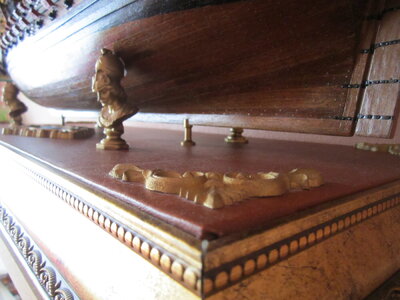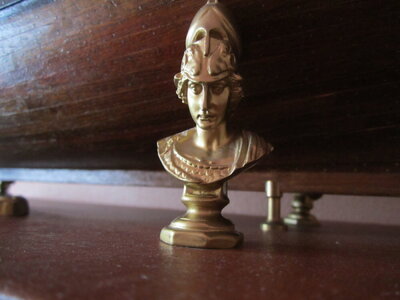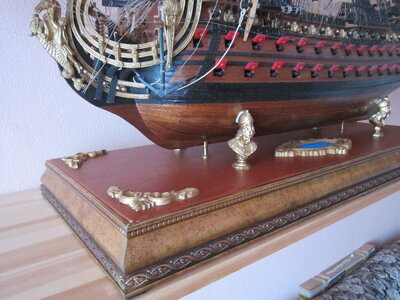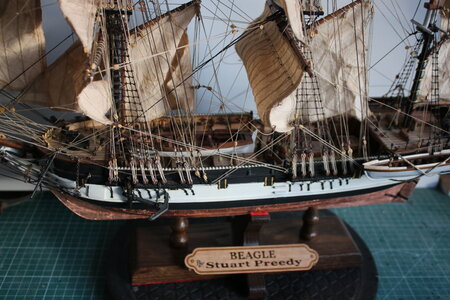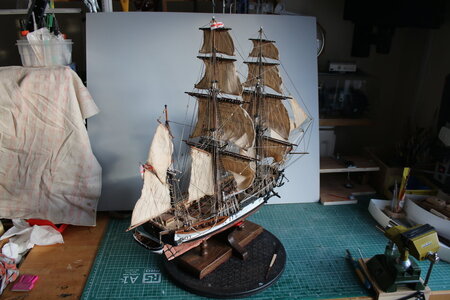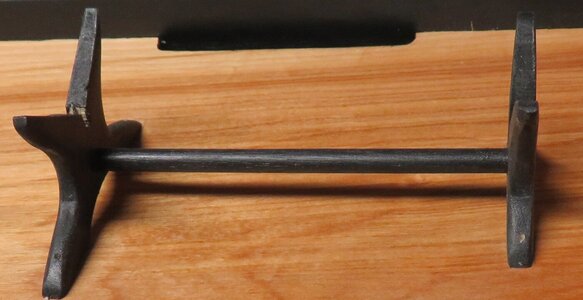Most of my models are mounted on a simple pine board with stain and poly. I use various pedestals such as the brass pedestals one can get on line. I have also made pedestals out of decorative finials…I cut the finial for a flat end and trim to size picking up the curves of the finial. What ever I use for mounts…including cradles…I drill a pilot hole up through the mounting board…through the pedestals (if they do not already have a pre drilled hole) or cradle…and into the keel. The placement of the pilot hole into the keel takes early preparation. At the point of assembling the false keel bulkhead choose where you want the mounting pedestals to be located. Reinforce that point with extra wood to add thickness to the false keel. Then drill the pilot hole through the keel into the false keel bulkhead. Then proceed with planking the hull. When I get to the point where I want to mount the model I can thread a long screw (I have found very thin three and four inch screws…normally a #4 four inch screw) up through the mounting board, the pedestals, and into the pilot hole of the model…tighten down the assembly…and the model is tightly mounted and secure. I usually mount my models after I have finished the hull details but before I start the rigging. Last, I embellish the mounting board with edge moldings or decorative brass corners.

